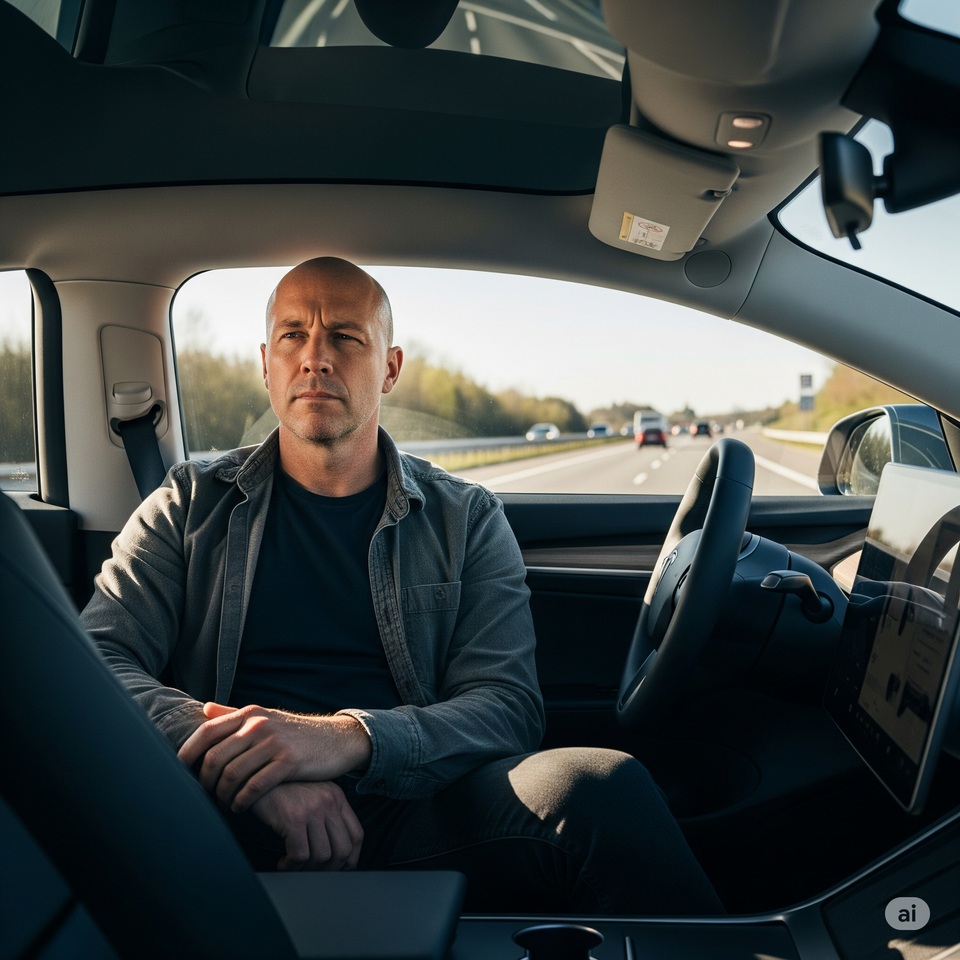Notes on FSD From a Driver at Large

With the upcoming expiration of the EV tax credit at the end of September, I moved up my plans to purchase an electric vehicle. I was originally thinking that I would hang on to my 2019 Prius Prime for a few more years and when autonomous driving was declared to be a “solved problem” (i.e. “Level 4” as defined by the Society of Automotive Engineers (SAE) International's J3016 standard) I would pull the trigger and replace my trusted driving companion, equipped with “Lane Keeping”, but hardly autonomous.
I decided to buy a 2026 Tesla Model Y, often described as the Juniper refresh in the many YouTube videos which have reviewed this model. I have been following Tesla’s progress with what they call “Full Self Driving” (FSD) for many years in the form of test videos posted by “Dirty Tesla” and “AI Driver”, two YouTube channels with recorded test drives of FSD when subjected to various real-world predicaments. Over the years, their test scenarios have ranged from long drives through the narrow lanes of the hill-top communities in Berkley, California, to the busy pedestrian traffic around University of Michigan when class is in session. Some FSD software revisions produced regressions, but most produced remarkable improvement, especially when an end-to-end Deep Learning network was introduced. The latter is a fascinating case study in the advantages of AI models over more traditionally coded algorithms, but this is a discussion for another time.
Informal Test Results
I hesitate to call what I have experienced a “Test”. It is more correctly described as my opinion of FSD performance in the context of two weeks of driving around Southern California. I live in the suburbs of Orange County, California so most of my driving is on crowded freeways or residential roads populated by those in a rush to make their next appointment.
In the next few paragraphs, I will give my verdict of FSD version 13.2.9 and whether it is worth the $99/month subscription fee.
Pay Attention!
If you are new to FSD, don’t expect that it will enable you to explore the many configuration options for your new vehicle as you drive. And don’t expect that you can take your time selecting a podcast or playlist while you drive. And don’t expect that you can check out the scenery for a place you have passed through previously unaware. With the introduction of the 2026 Model Y, an inward facing camera was added to police the human driver for inattentive behavior and occasionally ask the driver to apply slight turning pressure to the steering wheel to verify that you are paying attention to the prompts on the screen. If you were really paying attention to the road, however, why would you respond to an onscreen dialog, which itself is a distraction? Anyway, I appreciate the sentiment, and I admit it has caught me a few times glancing at my smartphone or spending too much time selecting a podcast. Don’t worry the attention police are not active when you are driving manually, allowing you to resume your inattentive habits.
Driving Competency
Overall, I have to say that the driving behavior is safe and quite competent, meaning with one exception I never felt that I or my fellow drivers were endangered by driving mistakes or reckless behavior. Pedestrians were consistently identified, merging with oncoming traffic, changing lanes, stopping and starting at stop signs and lights were all handled competently and with an appropriate degree of aggressiveness, configured with the “Chill”, “Standard”, or “Hurry” options. The one time I felt that I needed to intervene for safety reasons was when FSD did not yield soon enough for an oncoming vehicle in the traffic circle. It felt like it might be slowing, but we were getting too close for comfort, and I decided to apply the brake.
Saving My Driving Butt
There were two notable events where FSD reacted sooner than I would have to a potential hazard. One occurred when a stopped vehicle in an adjacent lane tried to merge into my lane at the last possible second. I would have had to hit the brakes hard to avoid a fender bender, but FSD instantly changed lanes instead. A human would not have had sufficient time to safely make a comparable maneuver.
Another time occurred when an unlit vehicle turned sideways was stopped in my lane. This was most likely the result of an accident that occurred shortly before. Since there were no lights on the car, I was questioning whether what I was seeing was truly an obstacle or just a mirage. Before I could apply the brakes FSD was already slowing, allowing a less aggressive deceleration than if I had been driving.
At this point I was fully stopped at a safe distance from the disabled vehicle, but going nowhere. The cars in the lanes to either side were stopped or moving very slowly. Had I allowed FSD to remain in control, I believe we would have remained motionless until a gap formed in the traffic flow of the adjacent lane, without any attempt to “ask” for room to merge by moving into the traffic flow aggressively. I took over, and pushed my way into the left lane, and called 911.
Contextual Intuition
I think the previous situation and others I have experienced reveal a fundamental flaw in FSD, its inability to intuit the overall context of the traffic and road ahead. In other words, is the car ahead fully stopped because of stop-and-go traffic or because it is disabled? Is the car ahead stopped because it is waiting to merge into the left lane to avoid a police car rendering aid to a tow-truck driver? Is the traffic slowing because of cleaning equipment in the shoulder, meriting a general reduction in speed rather than a lane change. You get the idea.
These are circumstances that can only be understood by studying various environmental cues that describe what and why normal traffic is affected. It might sometimes require that the driver read a sign with a message indicating a road hazard ahead. It might require that the status of the vehicle ahead be assessed, in terms of its likelihood to continue when stopped. It might also require that the behavior of other drivers be assessed, especially if their driving behavior is erratic or impaired in some way.
This is something we do as a function of our accumulation of experience on the road, especially as we become more familiar with the normal conditions of the routes we drive regularly. So how will FSD move beyond simply being a good driver, to being an intuitive driver? I suspect that this is an active area of research for Tesla, and for the AI community at large.
Superhuman FSD
On occasion autonomous driving experts will proclaim that one day driving AI’s will be superhuman, meaning that their driving performance over a defined period will exceed what is possible for an experienced human driver. Likely the number of miles driven without incident will become the dominate metric, and over time as more autonomous vehicles are introduced, the results will probably improve even if the software does not just because autonomous vehicles are more predictable and will coexist with each other better than they coexist with erratic humans.
But will they ever be truly superhuman? For me the defining criteria for such a designation would be demonstrated with real-time problem solving in hazardous conditions. FSD must be able to make “rational” choices that exceed those that a human might make when subjected to the same hazard. In other words, under identical timing constraints, and complete situational awareness, would the human be able to keep up with FSD.
Bottomline
As of version 13.2.9, FSD is a reliable tactical driver, but is lacking the situational awareness to make strategic decisions. For supervised driving being tactical is sufficient. For Level 4 (unsupervised driving) I would say that strategic decision making is also required.
I have been a software engineer for many years, and I have developed robotics software for many of those years. I am struck by how easy it is for me, indeed most everyone else, to underestimate the level of difficulty to function in the world as a mobile self-contained entity. So many of the mechatronic behaviors we perform unconsciously are the virtuous outcome of many years of child development that most of us take for granted. FSD is likely following a similar path, from learning in a highly supervised regime, to more independent online learning.
So, is it worth $99 a month to use the services it provides, albeit in a supervised capacity? Oh my, yes! I spend more time driving with FSD active than I do driving without it, so much so, that I look forward to actually controlling the car. Who knew that driving would become a novelty again, like it was when I first got my license.
